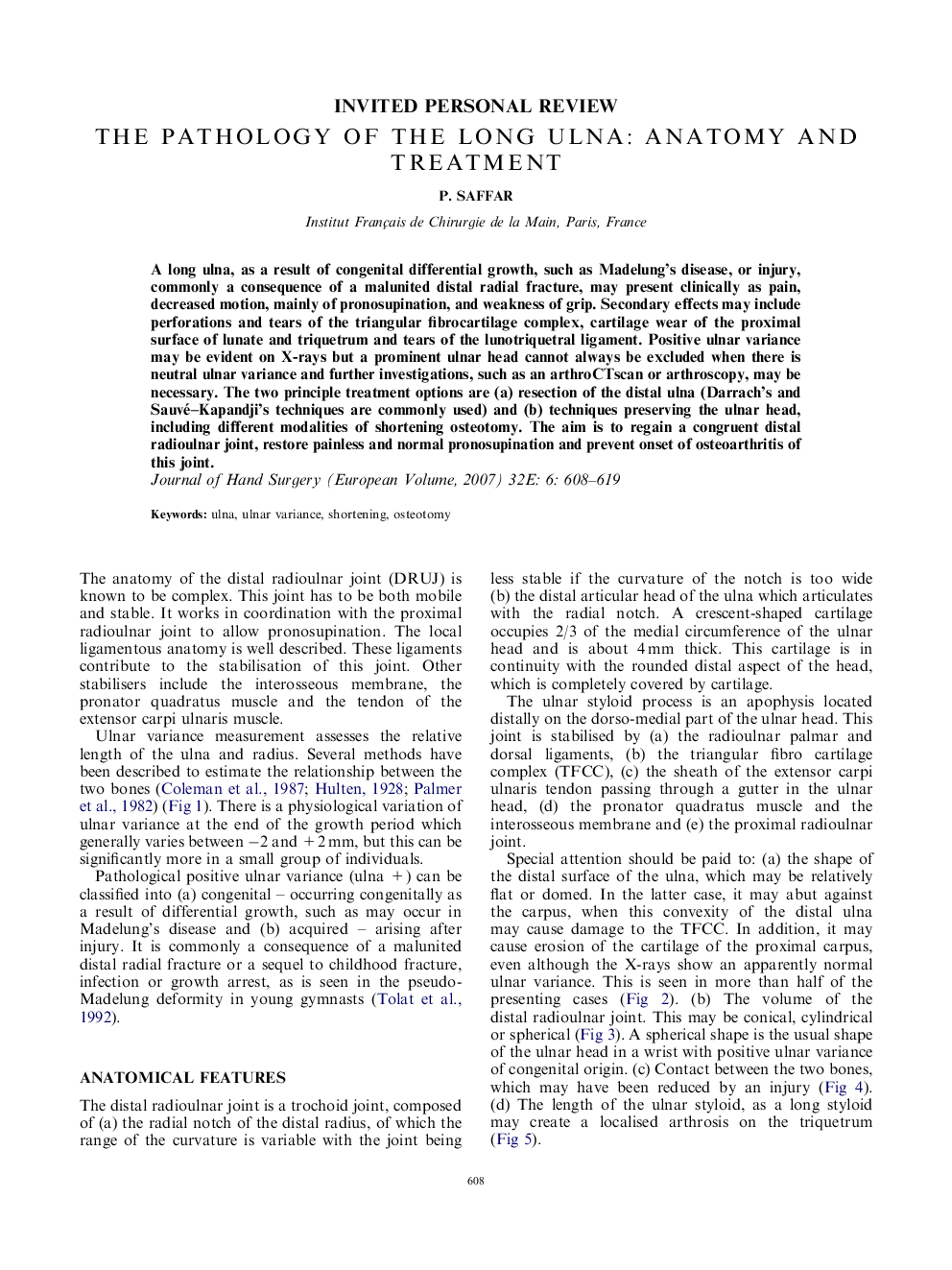| Article ID | Journal | Published Year | Pages | File Type |
|---|---|---|---|---|
| 4072025 | The Journal of Hand Surgery: European Volume | 2007 | 12 Pages |
A long ulna, as a result of congenital differential growth, such as Madelung's disease, or injury, commonly a consequence of a malunited distal radial fracture, may present clinically as pain, decreased motion, mainly of pronosupination, and weakness of grip. Secondary effects may include perforations and tears of the triangular fibrocartilage complex, cartilage wear of the proximal surface of lunate and triquetrum and tears of the lunotriquetral ligament. Positive ulnar variance may be evident on X-rays but a prominent ulnar head cannot always be excluded when there is neutral ulnar variance and further investigations, such as an arthroCTscan or arthroscopy, may be necessary. The two principle treatment options are (a) resection of the distal ulna (Darrach's and Sauvé–Kapandji's techniques are commonly used) and (b) techniques preserving the ulnar head, including different modalities of shortening osteotomy. The aim is to regain a congruent distal radioulnar joint, restore painless and normal pronosupination and prevent onset of osteoarthritis of this joint.
